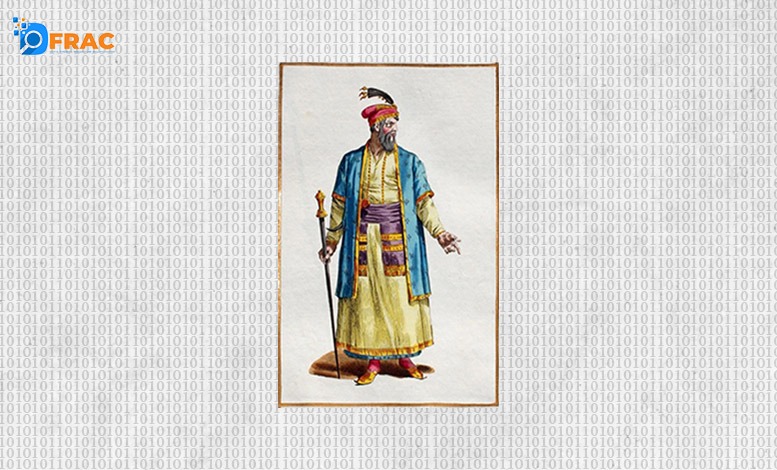The strange anomaly is that we know a lot about the Mughal emperor Aurangzeb but we know very little about the person Aurangzeb who ruled almost the entire Indian subcontinent for almost half a century. The boundaries of his empire were wider than those of Ashoka and Akbar and for the first time, almost the entire subcontinent came under one rule. Colonial historiography portrays Aurangzeb almost as a villainous ruler, and the books of Sir Jadunath Sarkar, the eminent historian who did the most detailed and important research on him, reinforce this image.
Gyanvapi and Mathura under him
While it is a historical fact that Aurangzeb demolished temples in Kashi and Mathura, it is also a fact that both incidents were related to the Hindu uprising against the Mughal ruler around the same time. Historians document that riding on Aurangzeb’s embarrassment after Shivaji escaped custody, his close aides informed him of some influential Brahmins in Banaras preaching texts that were influencing both Hindus and Muslims towards them. He was also made to believe that it was these people who had conspired with Shivaji. Aurangzeb ordered his governors to demolish the centre and temples of those he called ‘misbelievers’ preaching bogus teachings. Similarly, Mathura’s demolition came after a massive Jat uprising against the Mughal rule in the region. In 1669, under the leadership of local Zamindar Gokla, the Jats (of Mathura) rebelled, which spread rapidly among the peasants of the area. This rebel compelled Aurangzeb to take serious action in person. Resultantly, the Jats were defeated and Gokla was captured and executed. These facts, while revealing Mughal Aurangzeb as a religious fanatic, also prove that his actions were political and taken to stamp his authority to rule. Such political activities can also be found in modern and contemporary India and the World. The idea of socio-political religious extremism is based on similar legacies.
The extremist, cruel ruler
The portrayal is that of a fanatic, and cruel ruler who persecuted Hindus, ransacked their places of worship, re-imposed the Jaziya tax abolished by Akbar, and forced millions of Hindus to become Muslims. With this is associated the vision of establishing Rana Pratap and Shivaji as Hindu heroes and the struggle of Akbar-Pratap and Aurangzeb-Shivaji is presented as Hindu resistance against the tyrannical Muslim rule. This image is the most popular notion among the general masses. This is the reason that in August 2015, Aurangzeb Marg located in the capital New Delhi was renamed APJ Abdul Kalam Marg.
In this context, people forget that the colonial policy of creating discord and enmity between Hindus and Muslims converts the war of Hindu kings against the Mughal emperors into a religious conflict between foreign Muslim rulers and native Hindu kings. On the other hand, the reality is that the struggle between Aurangzeb and Shivaji was a struggle for pure political power and supremacy, not a Hindu-Muslim conflict. The rulers of that time, whether they were Muslims or Hindus, did several things, according to today’s modern values, would be considered unfair and cruel, but at that time they were considered normal acts of rule.
Taboot or Takht
Historians have tried to understand and analyse Aurangzeb not through the modern vision and values of modern times, but on the basis of the vision and values of Aurangzeb’s time, and her effort has been successful. Earlier, her book ‘Culture of Encounters: Sanskrit at the Mughal Court’ had drawn attention to the fact that the process of cultural synthesis was going on continuously in the courts of various Mughal emperors and Sanskrit scholars were given importance.
Aurangzeb’s elder brother Dara Shikoh was instrumental in taking this process forward, so comparisons are often made between the two, and Dara is considered tolerant, supportive of religious and cultural synthesis, and compassionate while Aurangzeb’s image is fanatical, Anti-Hindu, and cruel person because he had killed his brothers and imprisoned his father to get the throne. But the reality was not so simple. Unlike the Hindus, the Mughals did not have a tradition to consider the eldest son as the heir. That’s why there was a fight for succession in every generation and ‘Taboot or Takht’ was the motto of that time.
Aurangzeb publicly humiliated his brothers and got them killed, but doing so was no exception at that time. An Italian traveler Nikcolli Manucci documents that on the day when Dara Shikoh was to be executed, Aurangzeb asked him what he would have done if Dara had won. To this Dara said that he would have cut Aurangzeb’s body into four pieces and hanged them on the four main gates of Delhi.
Well, Aurangzeb buried Dara’s body in the tomb of his ancestor Humayun. At the same time, it is also true that in order to show himself completely different from Dara, he immediately stopped Dara’s intellectual and cultural projects. But at the same time, it is also a fact that Aurangzeb’s maternal uncle Shaista Khan himself used to recite poetry in Sanskrit.
Executed Guru Tegh Bahadur, Sufi free-thinker Sarmad
While taking decisions, Aurangzeb looked not through the lens of a Hindu-Muslim, but through the lens of a ruler. The basis of his decisions was not to oppress the Hindus but to maintain the supremacy of his power. Wherever his authority was challenged, he resorted to repression, and in this sequence temples were also demolished. But he also donated jagirs to temples. Most of the temples were demolished in North India while South India has a majority of temples and the last twenty years of Aurangzeb’s life were spent there. Aurangzeb destroyed only a few dozen temples in total. If he executed Sikh Guru Tegh Bahadur, then Sufi free-thinker Sarmad was also beheaded because he was a supporter of Dara.
Shivaji conflict not on religious lines
The conflict with Shivaji was also not due to his being a Hindu. The fact is that the number of Hindus holding high positions in Aurangzeb’s court and administration was much higher than that of any previous Mughal emperor. Shivaji had also accepted the submission of Aurangzeb earlier and in May 1666 he had also appeared in his court as a mansabdar and he had also given gifts etc. to the emperor according to Dastur. But Shivaji could not stay in this new role for long and rebelled. The long struggle with him has nothing to do with the Hindu-Muslim conflict. It was purely a fight for political power, otherwise, there was no shortage of Muslims in Shivaji’s army and administration.
Last 7 years of his rule not recognized by Mecca
A proof of Aurangzeb’s bigotry is believed to be that he banned music in his empire. But some historians also write that Aurangzeb himself was a skilled musician and was a musical expert. In the last decades of his life, he only banned singing in the court because he was thus depriving himself of something he loved very much. But music was not banned outside the court. The number of books on Indian music written in Persian during the reign of Aurangzeb exceeds those written in the five hundred years before that.
Historians believe Aurangzeb’s actions were determined by his ideals of justice, commitment to political and ethical conduct, and political requirements and that he was a man of his time, not of our time. His Mughal cultural heritage and his own religiosity contributed to the formation of his worldview. But his aim was not to create Hindu-Muslim conflict. Till the end, he regretted that the Sheriff of Mecca did not recognize his rule from the point of view of Islam for the seven years during which his father Shah Jahan remained in captivity. He expanded the empire as no one had done in the history of India. But in the last years of his life, failure stood in front of him.





